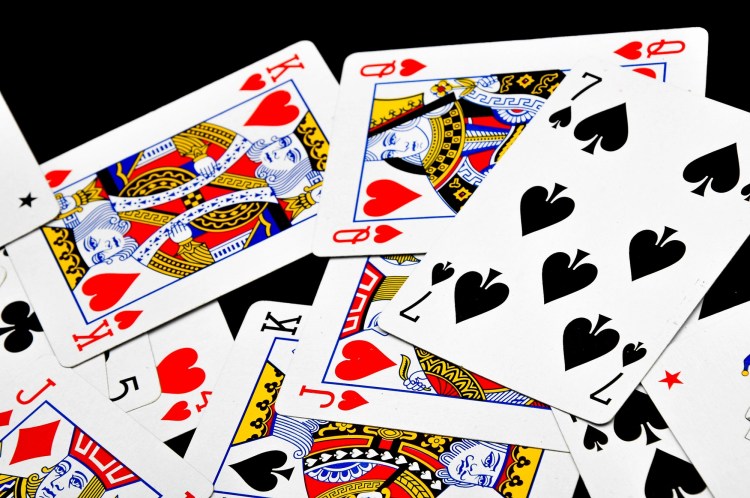Games like Whist went through a series of major changes that eventually led to the the game of bridge we know today. Let’s look at the evolution of bridge from its original form
The Invention of the Bridge Card Game: History by DashTickets

The Invention of the Bridge Card Game: History by DashTickets
Kia Ora broskis! Boy, do I have a fascinating story to tell you today! Over an intriguing kaleidoscope of social shifts, strategic breakthroughs, and the efforts of many people, the bridge card game has progressed over the years. This is a highly evolved game, mind you. Games like Whist went through a series of major changes that eventually led to the one we know today.
We look at the evolution of bridge from its original form, Whist, focusing on the significant figures and ideas that moulded the game along the way. Our invited guest Mark Dash from online top payout games magazine DashTickets will help understand the advantages of this game.
The Early Roots: Whist
The origins of bridge can be traced back to the 17th and 18th century English trick-taking card game Whist. As a game of strategy and cooperation, Whist became an integral component of English social life, especially for the aristocracy. During this time, the game’s rules were standardized thanks to the writings of an English barrister, Edmond Hoyle. This contributed significantly to the game’s popularity.
The Birth of Bridge: From Whist to Bridge-Whist
It seems evolution works on everything, including carbon forms and card games. The transition from Whist to bridge started in the late nineteenth century. A variant of the game called Bridge-Whist first appeared in the 1880s.
While keeping much of Whist’s framework, this version introduced new features, including the “dummy” hand. This is where a partner plays another player’s revealed hand. Brougham, a member of the British nobility and a lifelong card player, took the first major step towards the establishment of bridge when he codified the rules of Bridge-Whist. Do you picture an old white man obsessing over cards and rules? Yeah, so do I!
The Evolution Continues: Auction Bridge
Brougham wasn’t the only one pulling his hair on this, though. In the early 1900s, the launch of Auction Bridge in 1904 marked the beginning of the subsequent revolutionary phase. The inclusion of a bidding procedure in this version increased its complexity and strategic depth. Easy games are too mainstream, you see. You have to complicate things to have fun.
Players in Auction Bridge place bets to announce a contract, outlining their strategy for winning tricks and the suit that will act as trumps. This bidding phase laid the groundwork for modern bridge by greatly increasing the game’s strategic depth.
The game had also travelled continents by this point. Harold Stirling Vanderbilt was a prominent American railroad executive and an avid card player during this time. The innovations that Vanderbilt introduced to the game were revolutionary. They set the stage for the development of contract bridge.
The Legacy of Harold Stirling Vanderbilt
Modern bridge, or contract bridge, was introduced by Harold Stirling Vanderbilt. The man was clearly doing well as a railroad executive and had the time to create the new version of the game. In 1925, Vanderbilt introduced his new version of contract bridge while on a cruise with friends on his yacht, the “Fleur de Lys.” He and his friends tested the new rules and scoring system during this trip. The changes he introduced to the game, particularly the scoring system, quickly gained popularity and became the standard for contract bridge. This event marked a significant moment in the history of the card game, as Vanderbilt’s innovations laid the foundation for modern contract bridge.
The new scoring system that Vanderbilt created placed a premium on precise bidding and strategic play; this was his principal contribution. Players were incentivised to bid with more consideration and strategy thanks to his score system, which penalised them for not completing their commitments. The American and European versions of bridge that Vanderbilt introduced became instant classics.
The Growth and Popularity of Bridge
Contract bridge saw a meteoric rise in popularity as Vanderbilt introduced new innovations. From casual get-togethers to formal club meetings and tournaments, the game quickly became a mainstay. This was enough to form The American Contract Bridge League (ACBL) and other bridge clubs! Organisations worked to standardise the rules of the game and encouraged its broad acceptance.
One reason bridge has remained popular for so long is that it can be enjoyed by both recreational players and those who take the game seriously. For those who take it seriously, the Vanderbilt Cup and other bridge tournaments and championships serve as stages for competitive play and significant prizes are awarded to the best players.
Final Thoughts: A Test of Skill and Strategy
Bridge was not created by a single mad genius but rather by a group of dedicated and obsessed individuals who, over many years, built upon the ideas. The history of bridge, from its humble beginnings in Whist to the revolutionary influence of Harold Stirling Vanderbilt, mirrors the progression of card games from casual activities to intricate debates of strategy. According to DashTickets, bridge far surpasses other popular card games in the number of variants and is on par with chess.
Bridge is still a well-respected game that people of all ages and walks of life love to play. New generations of Kiwi card players, too, are enthralled by its rich history and the strategic challenges it presents.








